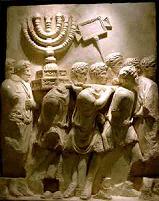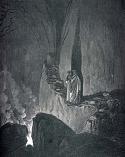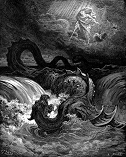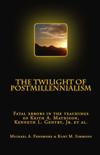Bengel's Bimillennialsim
Excerpts from John Albert Bengel's
Gnomon Novi Testamenti
[Editor's note: Bengel was a great Greek scholar, but wrote his treatise on the New Testament in Latin. Below is a translation by Weidner, published in three volumes by Fleming H. Revell Co., New York, Chicago, Toronto (1867). With some qualification, we agree with Bengel that the first millennial period begins and ends before the beginning of the second. However, in our view, the first (the binding of the dragon) spoke primarily to the reign of Claudius who enforced the religio licita, restraining persecution of the church, ending with the persecution under Nero. The second (viewed exclusive of other deceased saints) speaks of the blessed state of the martyrs in hades paradise who died under the persecution of Nero (the beast). Thus, the one takes up where the other leaves off.][1]
Rev. 20:4 Thrones - Judgment-seats. Beheaded - Gr. ton pepelekismenon
.................................
A thousand years - Two millennial periods are mentioned in this whole passage, each three times: the former is the millennium in which Satan is bound, ver. 2, 3, 7; the other, that of the reign of the saints, ver. 4, 5, 6. "There is," says Lange, "no foundation for two periods of a thousand years, either in the text, or in fact, in the connection of the parts of the Apocalypse." But the second millennium extends even to the resurrection of all the dead, ver. 5; the former comes to a close before the end of the world, ver. 7, etc. Therefore the beginning and end of the former is before the beginning and end of the second.
............................
Rev. 20:7 - The thousand - Those thousand years only, during which Satan was bound; for now again Satan is treated of. The article is used demonstratively, to point out the former of the two subjects or periods of a thousand years. So the article to, the beast, ch. xiii. 15, refers not to verse 11, but to verse 1. Comp. Sept., 2 Sam. xxiii. 19, 23.
_____________________
Notes:
[1] Viewed from the perspective that paradise and the first resurrection were inclusive of the righteous from Abel until the general resurrection, there would be a chronological overlap between the two millennia, but from the perspective of only the martyrs who died under Nero (the point of the passage), the second millennium would follow the first. However, chronology is not the point of the passage: the timeless nature of the Hadean realm and Graeco-Roman notions of Hades is, each thousand year period pointing to the objects' time in the nether realm prior to their respective resurrections.
To receive Kurt Simmons’ e-mail newsletter, The Sword & The Plow, click the Subscribe link:
All rights reserved.






